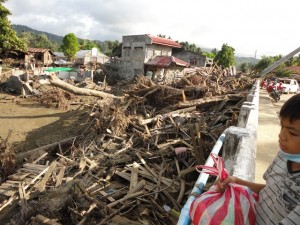The Philippines topped the list of countries most frequently hit by natural disasters in 2011, the Citizens’ Disaster Response Center (CDRC) reported.
 Carlos Padolina, CDRC’s Deputy Executive Director, cited the records of the Centre for Research on the Epidemiology of Disasters (CRED) which showed that of the 302 natural disasters that happened worldwide, 33 occurred in the Philippines.
Carlos Padolina, CDRC’s Deputy Executive Director, cited the records of the Centre for Research on the Epidemiology of Disasters (CRED) which showed that of the 302 natural disasters that happened worldwide, 33 occurred in the Philippines.
CDRC is a partner of CRED, a World Health Organization collaborating center based in Brussels, Belgium, which maintains the Emergency Events Database (EM-DAT: The International Disaster Database).
CDRC revealed that if human-induced disasters like armed conflict and fire were included, the total number of disaster occurrence in 2011 will reach 431. This is a more than 50% increase from the 2010 figure of only 202 disaster events recorded. CDRC maintains its own disasters database, monitoring both natural and human-induced disasters.
Padolina added that these natural and human-induced disasters combined affected more than 3 million families or 15.3 million people, and caused over Php 26 billion in economic damages. This is a major leap from last year’s only 6.75 million people affected.
The Philippines also placed third in the list of countries most affected by natural disasters in 2011 with 11.7 million people affected. Previously, the country placed only 5th on that list.
Padolina said the Philippines’ ranking came not as a surprise since Tropical Storm Sendong (Washi), one of the worst disasters that hit the country, happened late last year.
In terms of casualties, the Philippines came second to Japan with 1,924 people killed. More than 1,400 of these were due to tropical storm Sendong.
“The challenge for us is to reduce the impact of disasters on our lives,” Padolina said. “No matter how frequent these calamities might occur, as long as we are prepared, we can bounce right back.”
CDRC is a non-government organization that pioneered and continues to promote community-based disaster management in the Philippines. It operates nationwide through a network of regional centers and people’s organizations.
Download the complete Philippine Disaster Report 2011 here.

Leave a Reply